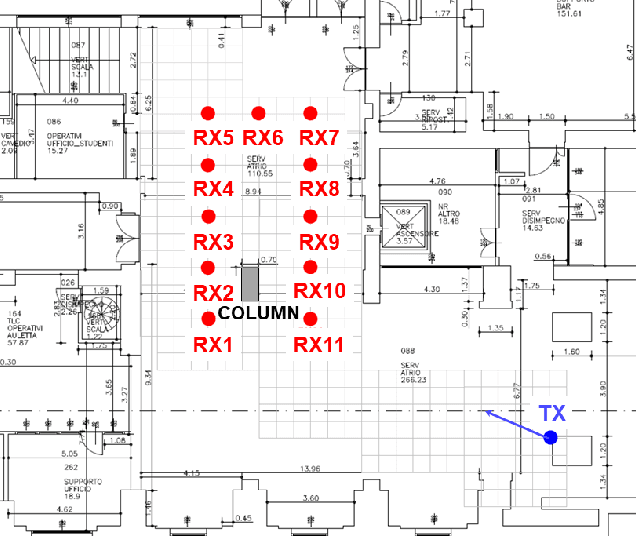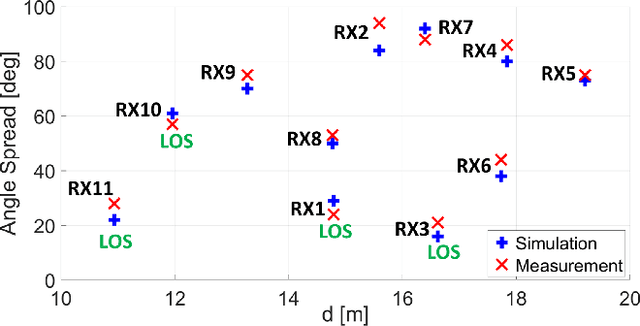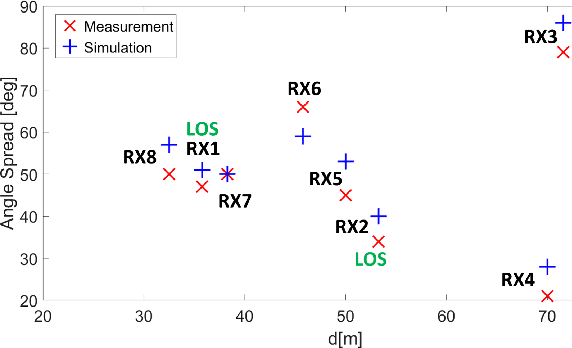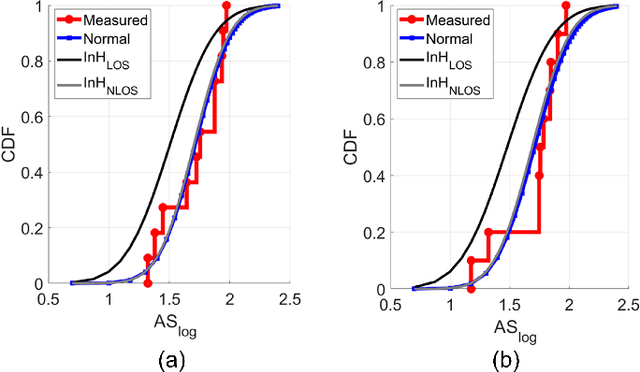Leonardo Possenti
A Study on mm-wave Propagation in and around Buildings
Oct 13, 2022



Abstract:mm-waves are envisaged as key enabler for 5G and 6G wireless communications, thanks to the wider bandwidth and to the possibility of implementing large-scale antenna arrays and new advanced transmission techniques, such as massive MIMO and beamforming, that can take advantage of the multidimensional properties of the wireless channel. In order to further study the mm-wave wireless channel, where propagation shows different characteristics compared to the sub-6 GHz band, a joint measurement and simulation campaigns in indoor and outdoor microcellular environments has been carried out. The investigation highlights that the traditional assumption that mm-wave NLoS propagation is problematic is not true since significant reflections, scattering and even transmission mechanisms provide good NLoS coverage in most indoor and outdoor scenarios. This also reflects in the limited angle-spread differences between LoS and NLoS locations in some cases. Finally, the contribution of different propagation mechanisms (reflection, diffraction, scattering and combination of them) to the received power is analyzed in the paper with the help of ray tracing simulations.
 Add to Chrome
Add to Chrome Add to Firefox
Add to Firefox Add to Edge
Add to Edge